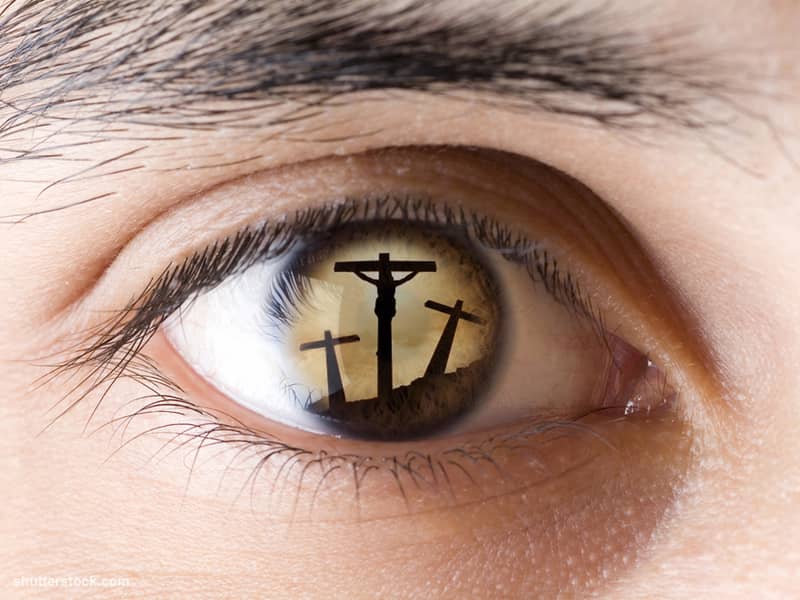The revised GIRM, whose English translation with special adaptations for the U.S. appeared a few months ago, was designed to promote "uniformity" in participation at Mass. The idea is to iron out inconsistencies in gestures (like where your hands go when praying) and postures (like kneeling and sitting) during Mass. If Catholics are "one body" in the Lord, shouldn't they be doing approximately the same thing at his table? But when the media began reporting that worshippers were required to embrace their fellow pew sitters before Communion, uniformity was the last thing on many Catholics' minds. Order me to hug a stranger? More like grounds for GIRM warfare. As it turned out, the hugging instructions came not from Rome but from the Diocese of Cleveland, Ohio. The Rev. J-Glenn Murray, S.J., director of the diocese's liturgy office, apparently decided to use the new GIRM rules as a springboard for an overhaul of Mass gestures in Cleveland-area churches. Murray decided, for example, that worshippers should pray the Our Father before Communion with their hands raised upward and apart--a posture known as the Orans that some Catholics already use, but which is far from universal. Then there were the infamous hugs, couched as an instruction that people "embrace" those near them instead of shaking hands, the usual gesture in a pre-Communion ritual popularly known as the Kiss of Peace. The most controversial of all of Murray's directives was an instruction that those receiving Communion not kneel down in prayer right afterwards, as most do now, but instead remain standing and singing in their pews. Murray's directives caused immediate alarm, not just in Cleveland but from coast to coast, as many people who read the news reports assumed the rules applied to all Catholics. In point of fact, the GIRM itself says nothing about standing after Communion, and states that kneeling during the Eucharistic portion of the Mass and at least part of Communion should be the U.S. norm (though the GIRM does give "the diocesan bishop" authority to determine otherwise). Amid the growing furor, Murray backtracked, posting a notice on the diocesan website stating that standing, hugging, and praying in the Orans position were only "options" that Cleveland Catholics would be encouraged but not required to adopt. The only mandatory change of gesture, Murray said, would be one specifically required by the GIRM: a reverent bow of the head before receiving Communion. So the Cleveland scare is off. But the whole area of gestures and postures at Mass is certainly in dire need of some guidelines on uniformity. Right now, a typical Sunday parish Mass is a theater of self-expression, in which the gestures and even dress of priests and laypeople alike are designed to convey subtle theological, ideological, and personal messages. As I look around, I often find myself playing Kremlinologist instead of praying. For example, the priest up at the altar might not be wearing a chasuble, the liturgically-colored outer vestment that is still at least theoretically required for the celebration of the Eucharist. That priest didn't forget to put on his chasuble. He's sending a signal about himself: either that he's a rebel who doesn't have to obey no rules, or that he's an informal kind of guy who, if he were out in the secular world, wouldn't be caught dead in a coat and tie.
!Kung people of southern Africa, the God! people have their very own exclamation point, derived from their practice of shouting "God!" in loud voices whenever a prayer at Mass calls for the laity to say "him" or "his." For most Catholics, it's "Let us give him thanks and praise." For the God! people, it's "Let us give God! thanks and praise." A church with a critical mass of God! people is often a church with a priest without a chasuble.
The Our Father is currently a three-ring circus of self-expression. Some people use the Orans position, raising their arms skyward. Others stick to the traditional folding of the hands close to the breast like a steeple, while still others dangle their arms at their sides. In areas associated with the south (the Old Confederacy, Southern California), many worshippers hold hands with family members and strangers alike to pray the Our Father, forming long human chains that wind from pew to pew.
Obviously the aim of the new GIRM is to replace this sort of chaos with something more orderly that will reinforce the sacred character of the Mass. As Advent approaches, dioceses will be pondering ways for their pastors to convey the news of the changes to the pew-sitters. If the Cleveland saga proves to set a pattern, however, the bishops may end up simply replacing one individualistic free-for-all for another. I say only this: Please don't make me hug, much less kiss, anyone I don't know.

